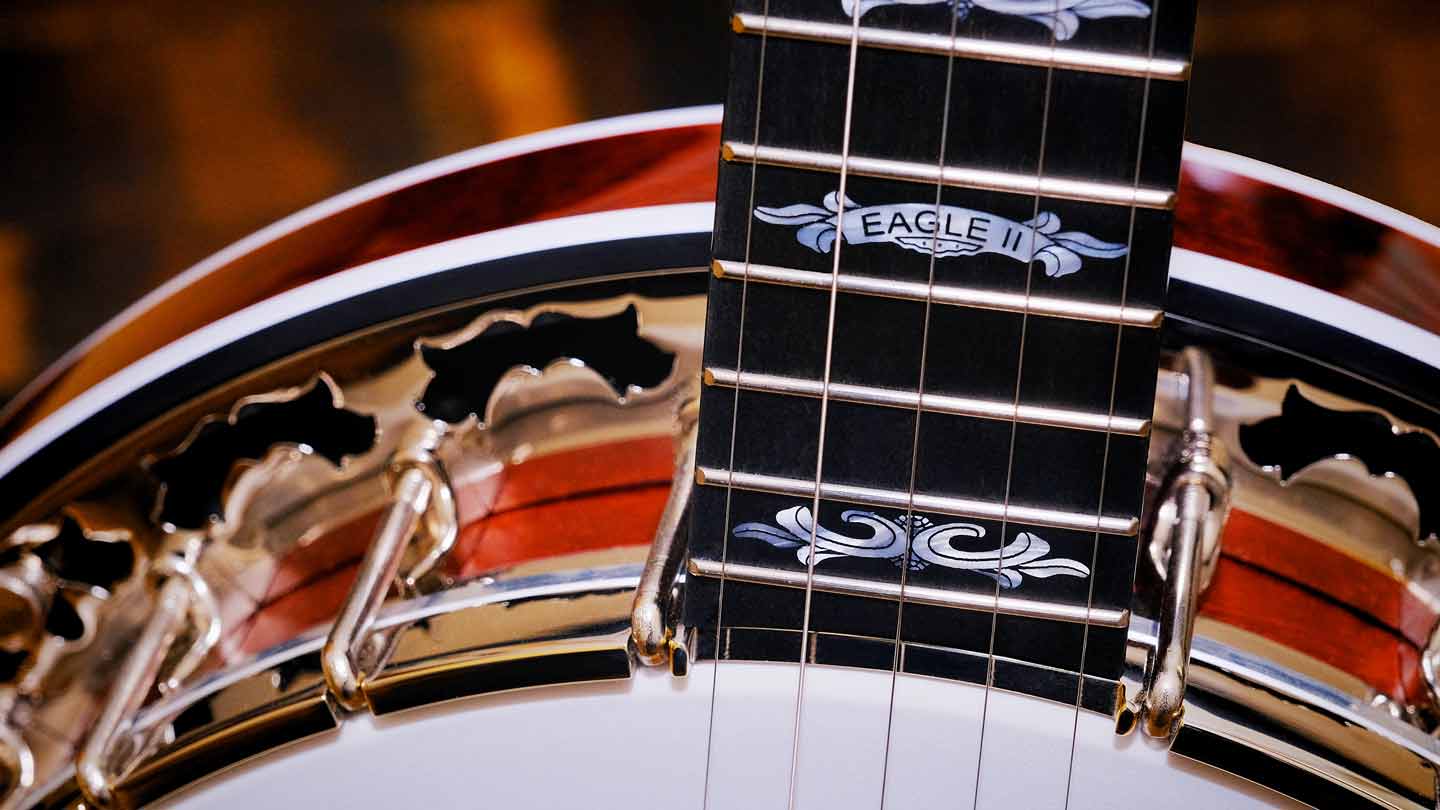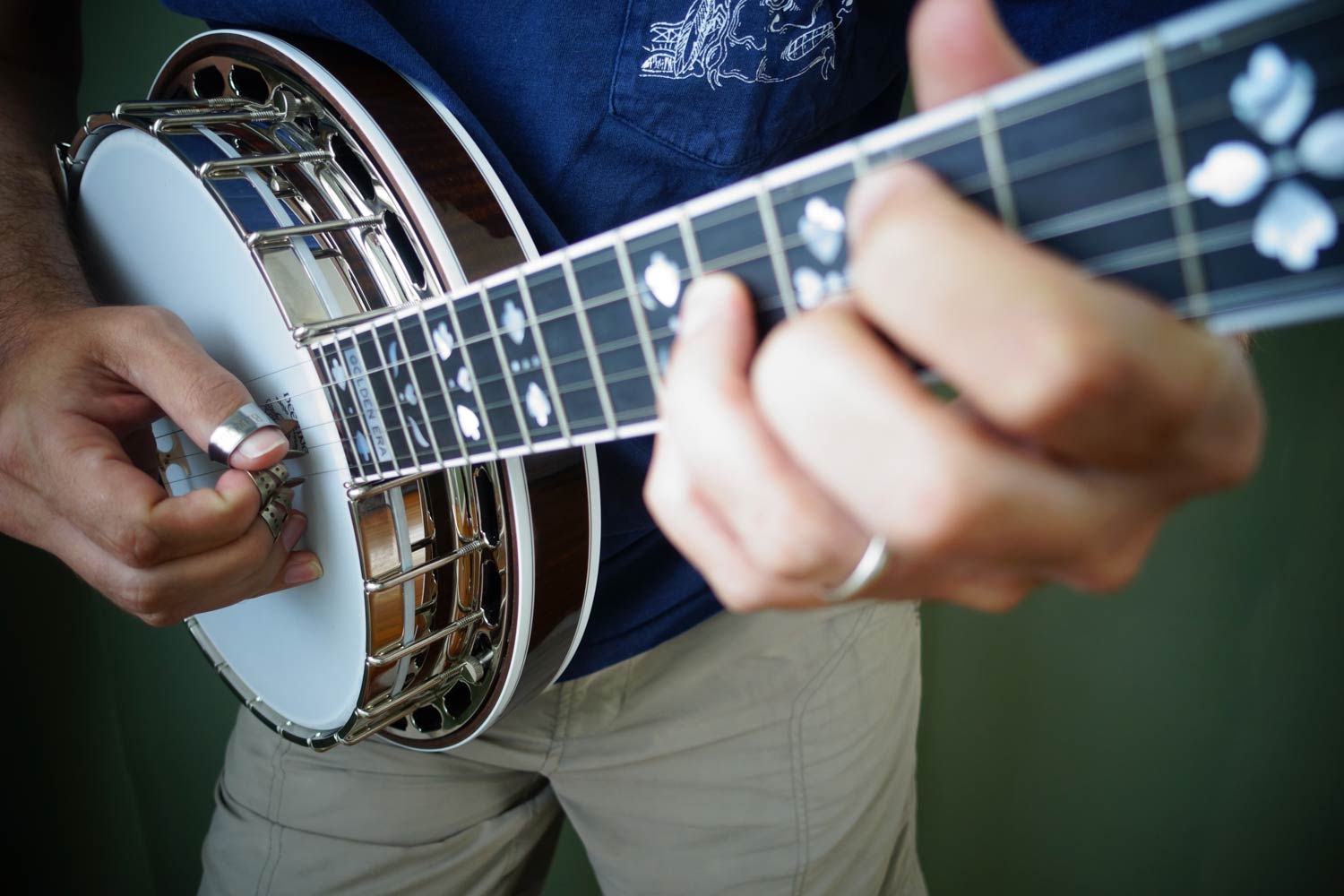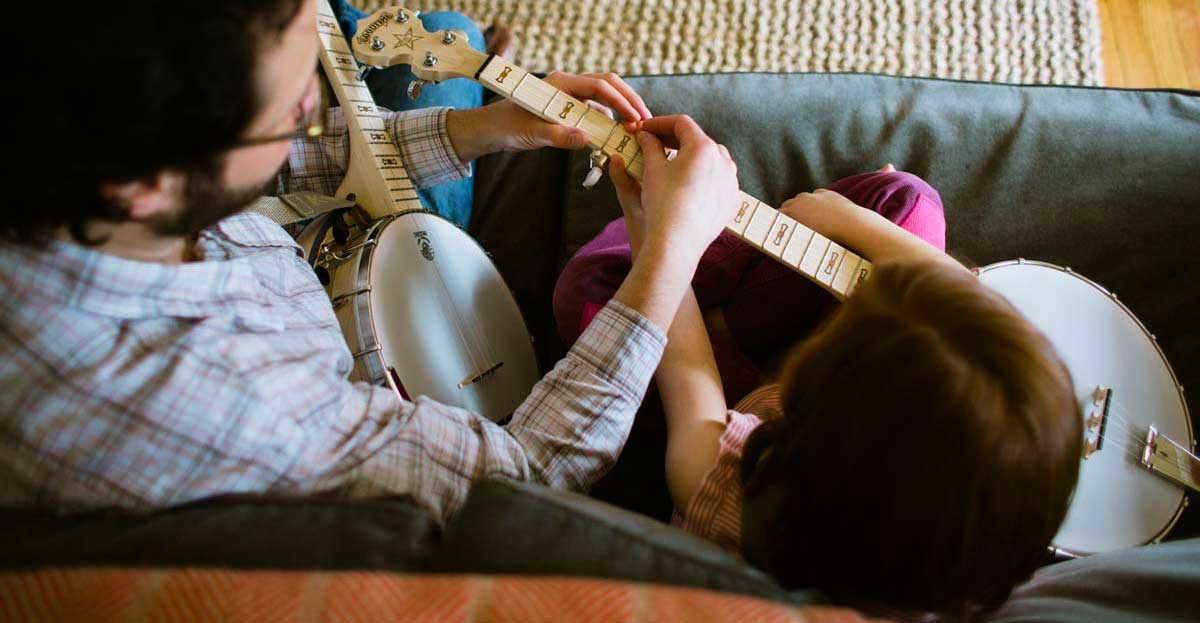Spring Cleaning Hardware Tips
While winter seems to be hanging on fiercely in some areas of the country that just means that spring is right around the corner! It’s time to pull out those cleaning materials and spruce up your banjo before you head out to the exciting world of festivals.
I have a couple of new tips on cleaning using materials that may be more close at hand as well as the “tried and true” tips of previous articles. There should be something for everyone!
- Cymbal Cleaner: I got this tip from a customer! I visited YouTube to get some tips to pass on to you for use. You can use any kind of cymbal cleaner you want. It is available at most music stores or online. I see that most cost from $8-$10 and it looks like one bottle will last quite a while.
- Spray on the cymbal cleaner…be sure not to get it on your wood!
- Leave it on for 15-30 seconds.
- Wipe off with a paper towel.
- Dry it off again with ANOTHER paper towel.
- Do not leave it to dry on the hardware as it will leave a residue!
- Brasso: Brasso is a metal polish designed to remove tarnish from brass, copper, chrome, and stainless steel. It is available as either liquid or impregnated wadding. Believe it or not, this one has been around for over 100 years and originated in Britain in 1905. This is amazing stuff; known to have been used to polish CDs, DVD, screens and even pools. It is mild solvent with an extremely fine abrasive so it should be safe for your banjo hardware.
- Put some of the liquid on a soft cloth (like an old white t-shirt)
- Rub gently to remove tarnish.
- Dry with another soft cloth and admire your handy work!
- As always, keep OFF the wood surfaces.
- You can find this one easily…I believe even Wal-Mart carries it.
It can be had for less than $10 a bottle in most locations.
- Glass Cleaner/409 Cleaner: These are available at most stores and can be had for well under $10. The production manager says this works well on banjos with “very grungy hardware.” Chances are if you are taking the banjo apart, this will work best. The quality control supervisor suggests that you put the cleaner on a soft white terry cloth and rub. You have more control over the liquid and can prevent overspray on the wood. By the way, both of these work great on to clean up the banjo head as well.
- Simichrome Polish: This is a thick paste that comes in a tube. In the “old days” when we had chrome bumpers on cars, you could find this easily in most hardware stores. You can find this easily online for under $10 with free shipping.
One tube will last forever. I used it once on a customer’s very old and sad looking hardware and I was amazed that the shine came back!
- Put a small dab on a paper towel or soft white cloth.
- Rub on tarnished hardware and clean with a separate white cloth and be prepared to be amazed.
- KEEP OFF wooden surfaces.
- Deering Care Cloths: The most convenient way to clean the hardware is to use one of our care cloth sets. It really is what we use here at the factory to clean our hardware and wood and each luthier has his own favorite among the set. They are available online for only $19 at www.deeringbanjos.com.
- White care cloth: Good for nickel or chrome but not gold hardware. This one has just a slight be more abrasive in it and is great for when you have “forgotten” to clean your hardware after each session of playing as per my factory recommendation. You just rub and you might have to slightly moisten the hardware service to release the material in the cloth. Don’t wet the cloth! Just moisten the surface you are going to clean if needed before using the cloth.
- Grey care cloth: Can be used on gold, chrome, or nickel. This is what I like to call your “daily” cloth. It has two cloths in one. The outer one is grey and can be used to wipe down the hardware to remove moisture and oils. The inner cloth has the milder tarnish in it and is great for removing the lighter tarnish on the metal.
- Pink care cloth: Meant to be used on the wooden surfaces of the banjo, this one has wax in it. This is also a good “daily” use cloth in that it is safe for all surfaces.
GENERAL TIPS AFTER CLEANING:
- Once your hardware is clean, put a light coat of car wax/polish on the surface of the armrest, and wipe it off, you will have thin protective coating on it. Because this is the surface that gets the most wear, it will give some further protection.
- ALWAYS wipe down your banjo after each playing session. Whether you use a care cloth or a soft white t-shirt, it will remove the oils and moisture from your hands and keep the surfaces cleaner and brighter.
- Wash your hands before a playing session to be sure you don’t have any lotions or after-shave or any chemical substance that might interact with the finish of the banjo neck. It is an easy thing to do and will save you a refinish cost and the inconvenience of being without you trusty banjo when you want to play!
















Thanks, we think it is a good product as well.
The cleaning of metal products are not easy but your tips are good way about this purpose. Simichrome Polish is best source to clean all type of metal items. I had used this polish many times for my car cleaning and other commercial cleaning purposes.
Hi Nico,
We recommend the use of almond oil (the kind that if “food grade” found at health food stores) to clean and refresh the banjo fingerboard. Put some on a soft white cloth. You can use this to clean as well. Just put the oil on the cloth and rub gently until the dirt comes up and then take a clean cloth and rub it gently over the fingerboard and take a dry cloth and remove the excess. Yes, those heavier strings are find for any Deering upperline banjo; not Goodtime banjos.
That tuning is what we would recommend for plectrums as well. Thanks for reading our articles and for taking the time to write.
Hello Carolina & collaegues,
Thanks for the metal cleaning guidance. Indeed Brasso is in our household arsenal as long as I can remeber (YoB 1947, so that’s for a while).
Any tips for cleaning the non-metal parts? Such as finished wooden surfaces, fingerboards and strings? How can I avoid the build-up of smudge next to frets without having to wait untill I change strings?
BTW: I use 12-15-20w-28w on my plectrum (26 1/4" scale) and the same or 11-14-20w-28w on my 19-fret tenor (23"scale), both in CGBD tuning. Voice and playability suit me and most of the plectrum players that took them on their lap. And enough noise to assist an army of small and big horns, reeds and drums. Unless played very carfully, far too much for a vocalist, as you may imagine….
Glad to be of help. Thanks for reading and writing us. :-)
Leave a comment